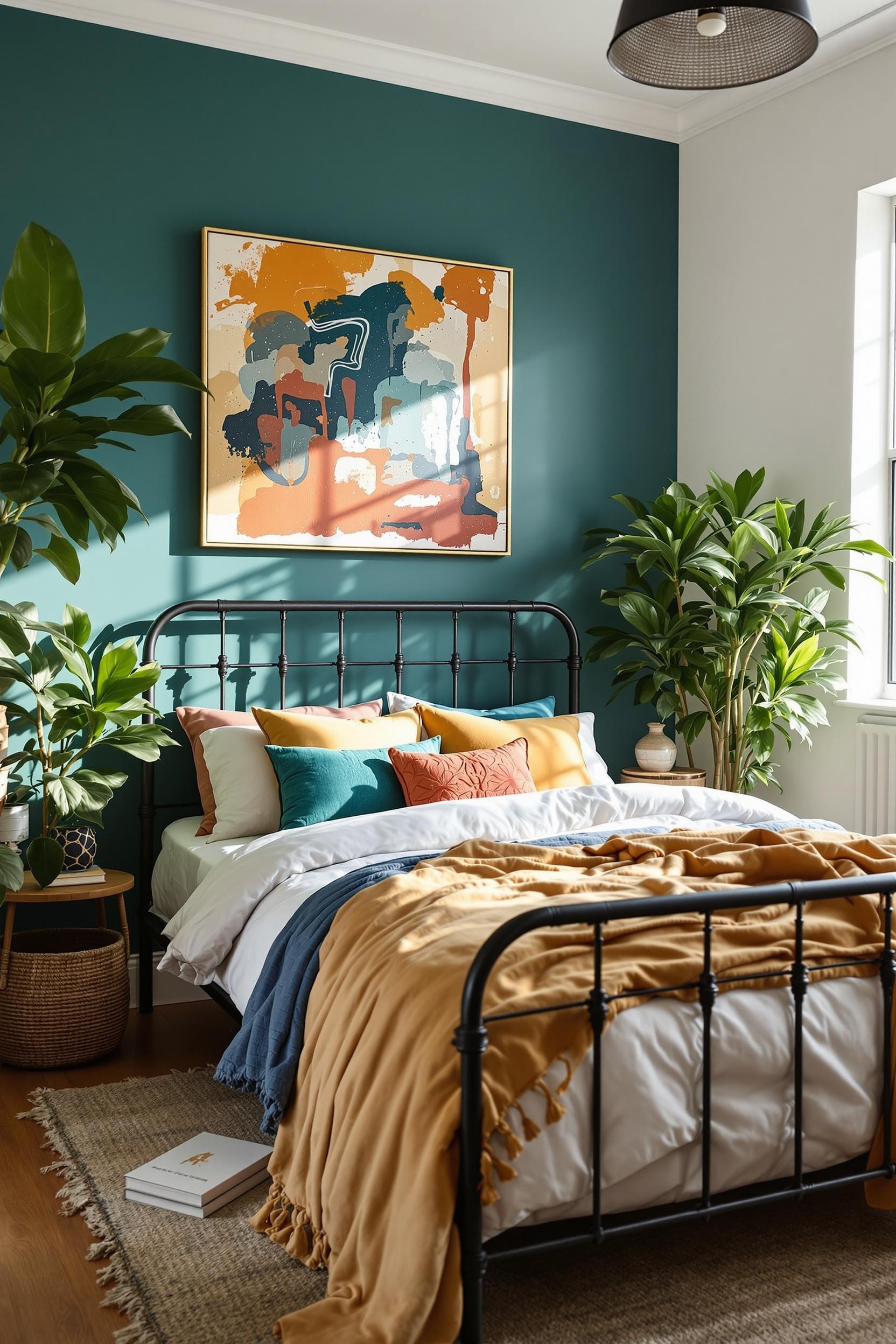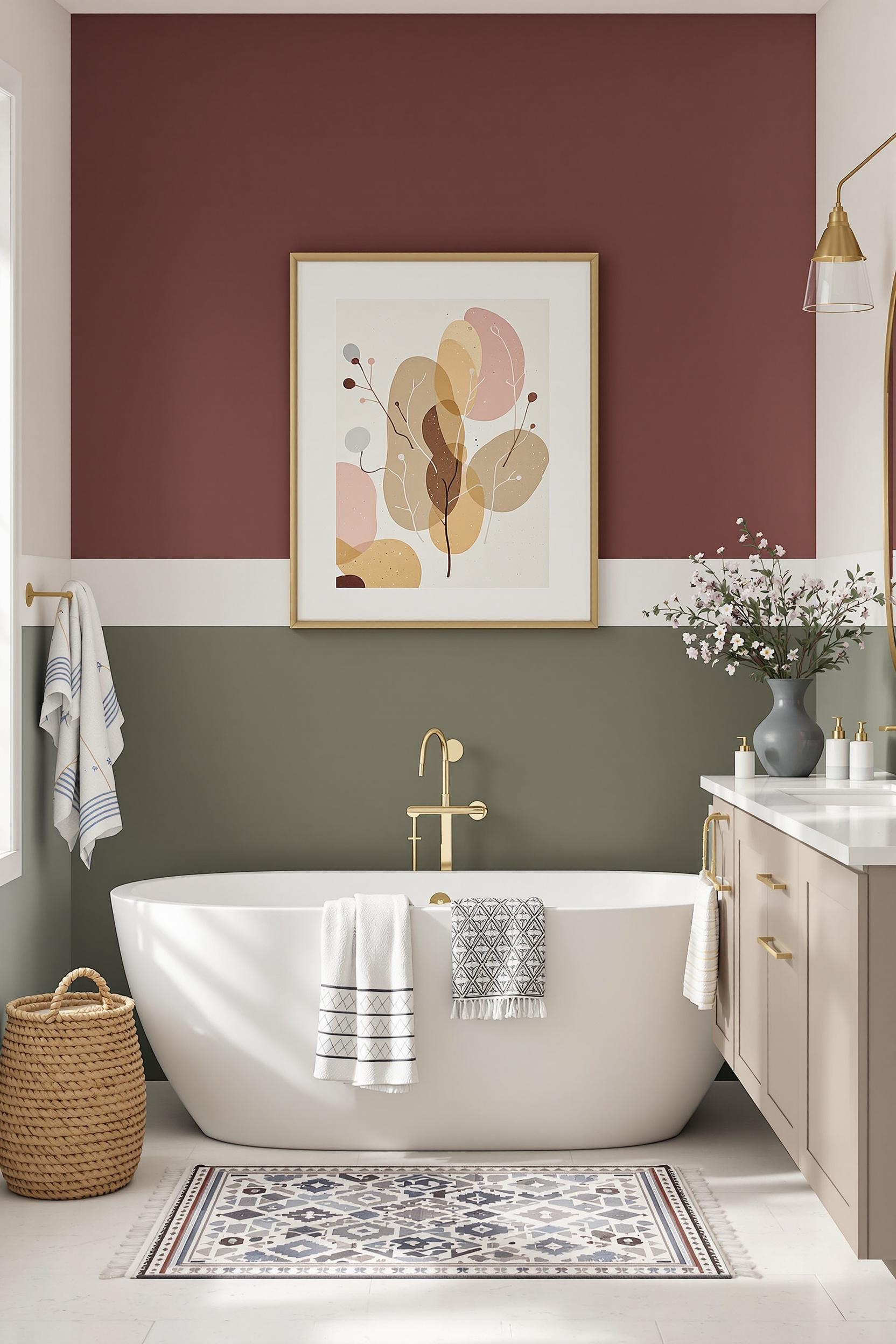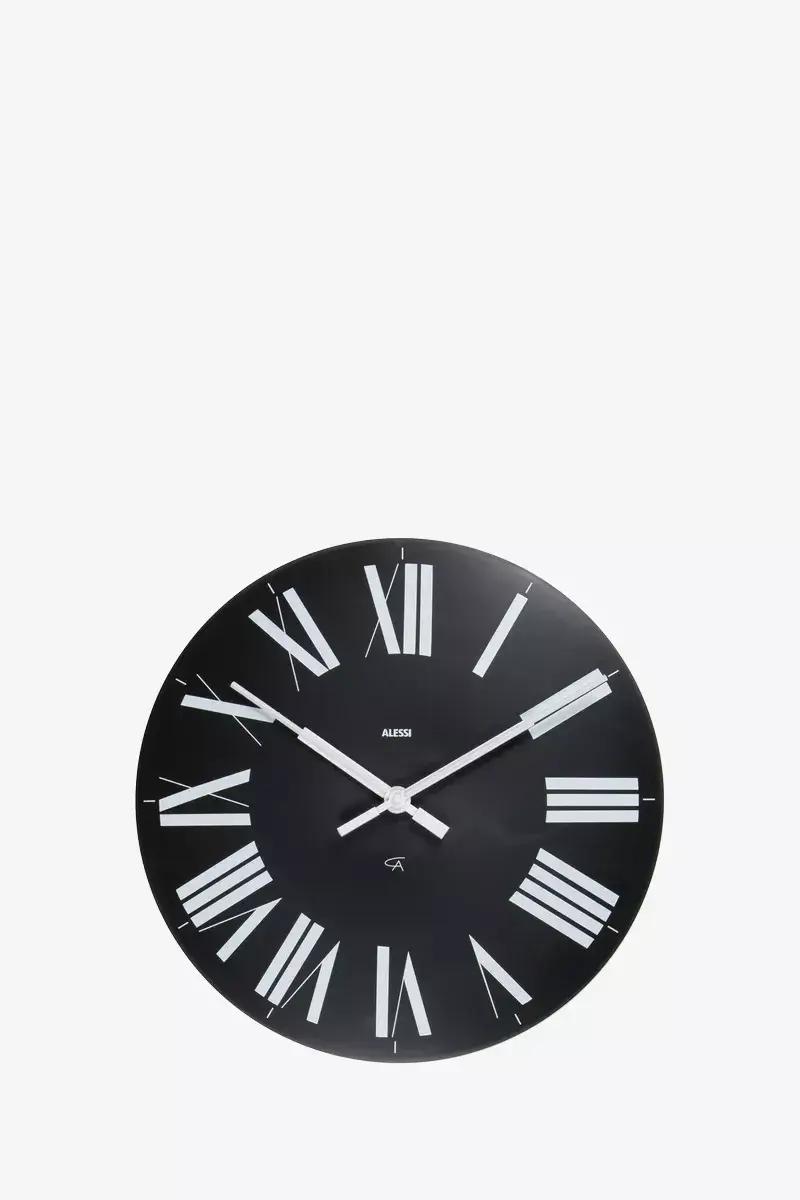
Transform Your Bedroom: Painting a Wooden or Metal Bed Frame with a Colorblocked Design
Have you ever walked into a minimalist bedroom and been mesmerized by a piece of furniture that simply pops? That’s the power of a color block bed frame. It’s no longer just about matching colors—it’s about mixing bold contrasts and thoughtful details to deliver a design statement. Whether you’re a fan of modern aesthetics or looking to add personality to a neutral room, painting a colorblocked bed frame is the perfect DIY project to make your bedroom the ultimate retreat.
Using color blocking techniques allows your furniture to express mood, function, and personality all at once. A colorblocked bed frame—whether wood or metal—can create a strong focal point and turn your sleeping space into a masterpiece. In this post, I’ll walk you through the entire process, from prep to execution, using professional color blocking design methods and beginner-friendly tricks.
Why Try a DIY Color Block Bed Frame?
DIY color block bed frame projects combine creativity and structure, ideal for both minimalists and maximalists. A painted metal or wooden bed frame in bold blocks adds depth and contrast, making the bed the room’s anchor without adding clutter. Plus, bold color use in minimalist spaces amplifies balance and style.
And here’s what else I love: it’s budget-friendly. This project requires only a few tools, a bit of time, and a splash of inspiration.
Choosing Paints: Best Types for Wooden and Metal Frames
To ensure durability and professional finish in this DIY color block bed frame tutorial, you’ll need the right paint.
- Wooden frames: Choose water-based acrylic or chalk paint. Chalk paint offers excellent coverage and bonds well without excessive sanding.
- Metal frames: Use a metal-grade primer followed by enamel or spray paint that resists chipping. A strong primer will help paint stick and prevent rust.
Just remember, preparation is more than half the job. Don’t skip it!
Picking the Perfect Colors: Create Emotional Harmony Through Color
Color choice is more than visual—it sets the room’s mood. A mint green stripe might enhance tranquility, while a pop of black adds boldness. When planning your minimalist color block bed frame, limit your palette to 2–3 colors.
Recommendation:
- Use one neutral (white, beige, gray) as a base.
- Add two accents—perhaps dusty rose or deep navy—for contrast.
- Choose colors that match your bedroom’s style and lighting.
Essential Preparation: Material and Surface Selection
Your design success depends on surface readiness. For wooden frames, clean with a degreaser before light sanding. For metal, remove old paint and apply a bonding primer. This beginner guide outlines every surface prep step.
Materials you’ll need:
- High-quality painter’s tape
- Angled brushes or foam rollers
- Drop cloths
- Laser level (for precise geometry)
Step-by-Step Guide: Painting and Color Blocking Furniture Techniques
- Clean and sand: Ensure surface is smooth and dust-free.
- Prime: Use primers suitable for either wood or metal.
- Design layout: Sketch your color blocking design. Use laser levels and tape for clean lines.
- Paint: Start with your base color. Apply 2–3 thin coats, letting each dry fully. Seal edges of tape with base color to avoid bleeding.
- Add accent colors: Finish painting the blocked sections.
- Seal: Protect your masterwork with a clear coat, especially if it’s a high-use frame.
Advanced Tips: Professional Color Blocking Furniture Design
Color blocking furniture takes a creative leap with geometric divisions and gradients. Instead of rectangles, try triangular beams or abstract diagonals as seen in geometric color blocking for small spaces.
Pro Tips:
- Use digital design software to test palettes and arrangements.
- Explore texture by blending matte and high-gloss finishes.
- Consider ombre transitions from dark to light between segments.
Troubleshooting: Avoiding Common Mistakes
Things don’t always go perfectly, but you can plan ahead. Here are common issues I see and how to fix them.
- Paint bleeding: Apply a base coat over tape edges before your accent color. This prevents leakage.
- Peeling paint: This signals poor prep. Always clean and sand. Metal frames need metal primers.
- Cracked finish: Avoid thick paint layers. Thin, even coats are key, each fully dried before the next.
If colors clash with your room, try pairing bold blocks with a neutral wall behind the frame. That’s a trick I picked up from color zoning bedroom wall design guides.
Bringing It All Together: DIY Color Block Bed Frame Success
Your bed frame has the power to completely shift your bedroom’s vibe. With strategic prep, practiced taping, and creative painting, you can achieve a look that feels modern, bold, and completely yours.
Let’s review:
- Choose 2–3 cohesive colors with purpose
- Prepare materials based on frame type—wood or metal
- Use thin coats and professional taping techniques for geometric precision
- Be patient and let every layer dry fully
Style your new color block bed frame with matching minimalist bedding. Try colorblocked pillows for an easy match that elevates the whole space!
Transform Your Bedroom: Color Block Design Challenge Starts Now!
Unleash Your Design Potential: A Personal Color Blocking Journey
This is your moment. Your chance to create a striking, stylish, and unforgettable bedroom centerpiece. Painting a color block bed frame isn’t only a fun DIY—it’s a personal adventure in self-expression.
Design Your Dream: Free Color Blocking Consultation
Need guidance? I’m offering a personalized consultation to help you create your ideal frame design. From the right tones to technique recommendations, I’ll guide you every step of the way.
- Custom color palettes that suit your space
- Tips for both wood and metal frames
- Help with color blocking layout designs
- DIY troubleshooting from real project experience
GET YOUR FREE COLOR BLOCKING CONSULTATION
Join Our DIY Color Block Design Community
By subscribing, you’re joining a passionate group of design lovers. Whether you want to reimagine a small bedroom or go bold in a loft, you’ll find support, feedback, and inspiration all around.
Start your transformation now and explore top paint color trends of 2025 to stay ahead of the game!
Color Blocking Bed Frame: Frequently Asked Questions (FAQs)
FAQ 1: What Are the Best Paint Types for Wooden Frames?
Use water-based acrylics or chalk paint. They provide great coverage and dry quickly. I recommend chalk paint for smooth, vintage-style finishes.
FAQ 2: How Do I Get Clean Lines on My Color Block Design?
Apply painter’s tape with a credit card to seal the edge. Then, brush over with the base color before the accent to stop bleed. See more tips in this guide to clean geometric lines.
FAQ 3: Can I Color Block a Metal Bed Frame?
Yes! Apply primer made for metal. Then spray or brush on thin coats of metal paint. More details are found in this expert guide by Benjamin Moore.
FAQ 4: How Many Colors Should I Use?
Stick with two or three. A base plus accents keeps your look clean. Minimalist design works best with subtle contrast and thoughtful color placement.
FAQ 5: How Long Does It Take to Complete?
Plan for 2–3 days, including drying time. Each coat should fully dry before applying the next. Give it 24 hours before reassembly.
Ready to Explore the Art of Color Blocking?
Now that you’ve got all the tools and tips, it’s time to put your ideas into action. Whether you’re inspired by bold geometric designs or simple two-tone blocks, your colorblocked bed frame can become the centerpiece of a stylish, restful bedroom.






